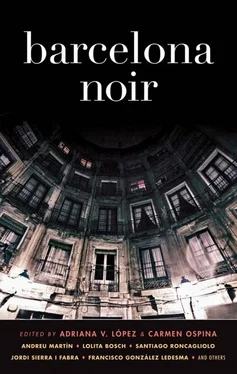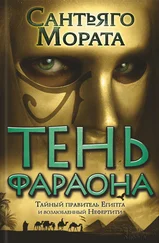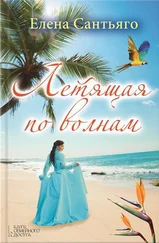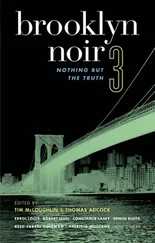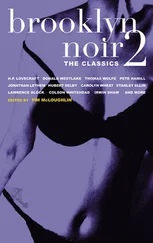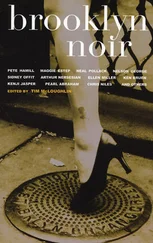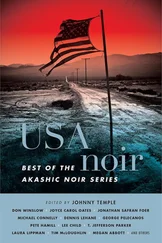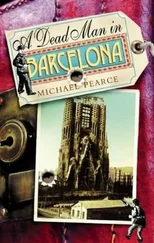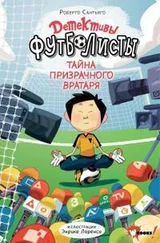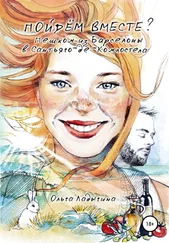Сантьяго Ронкальоло - Barcelona Noir
Здесь есть возможность читать онлайн «Сантьяго Ронкальоло - Barcelona Noir» весь текст электронной книги совершенно бесплатно (целиком полную версию без сокращений). В некоторых случаях можно слушать аудио, скачать через торрент в формате fb2 и присутствует краткое содержание. Город: New York, Год выпуска: 2011, ISBN: 2011, Издательство: Akashic Books, Жанр: Детектив, на английском языке. Описание произведения, (предисловие) а так же отзывы посетителей доступны на портале библиотеки ЛибКат.
- Название:Barcelona Noir
- Автор:
- Издательство:Akashic Books
- Жанр:
- Год:2011
- Город:New York
- ISBN:978-1-936070-95-4
- Рейтинг книги:5 / 5. Голосов: 1
-
Избранное:Добавить в избранное
- Отзывы:
-
Ваша оценка:
- 100
- 1
- 2
- 3
- 4
- 5
Barcelona Noir: краткое содержание, описание и аннотация
Предлагаем к чтению аннотацию, описание, краткое содержание или предисловие (зависит от того, что написал сам автор книги «Barcelona Noir»). Если вы не нашли необходимую информацию о книге — напишите в комментариях, мы постараемся отыскать её.
Barcelona Noir — читать онлайн бесплатно полную книгу (весь текст) целиком
Ниже представлен текст книги, разбитый по страницам. Система сохранения места последней прочитанной страницы, позволяет с удобством читать онлайн бесплатно книгу «Barcelona Noir», без необходимости каждый раз заново искать на чём Вы остановились. Поставьте закладку, и сможете в любой момент перейти на страницу, на которой закончили чтение.
Интервал:
Закладка:
Barcelona Noir

Introduction
Bloody Ramblings
Its physical beauty alone, surrounded by mountains with a view of the sea, was cause enough for architect Antoni Gaudí to raise his version of Candy Land upon its soil; a daily impetus for the city’s mimes and living statues to claim a spot along Las Ramblas and transform it into their stage.
But don’t be fooled: Barcelona, with all its illustrious color and exterior fineness, hasn’t always been able to curb the darker yearnings of its Hyde to its Jekyll. Blame it on a bubbling, repressive concoction made with a pinch of Church, a touch of Crown, and a large dose of General Francisco Franco to stir up the insides of its very independent and anarchic Catalonian spirit. One that has allowed it to conserve its own language and modus operandi from the rest of Spain, and that has always attracted the vanguard to create under the sereneness of its palm trees and Mediterranean light.
It may be hard to imagine, but Barcelona, presumably named after the Carthaginian general Hamilcar Barca in third century B.C., was once trapped behind the shadows of Roman walls, hidden within the largest concentrated labyrinth of Gothic architecture in all of Europe. Hundreds of years later, the thriving port city would open itself up to commerce, its industrial age, and with it came immigrants, workers, revolution, and vice. Then the city would endure the bloodshed of the Spanish Civil War (1936–1939), thirty-five years of Franco’s iron fist, and, when that was finally over, its cobblestoned streets became breeding grounds of resentment.
If noir is the genre most apt to expressing unease and malice within a society, it took awhile for Barcelona to feel safe to do so. In fact, Spain didn’t produce its first novela negra , with a police character and crimes of passion, until 1853, with the publication of Pedro Antonio de Alarcón’s El Clavo ( The Nail ). But bear in mind that Spain, in general, was not the easiest of places to be an author. Those brave or crazy enough to question the orthodoxy through their writing faced torture, imprisonment, or worse: death. Just remember Federico García Lorca’s tragic fate at the hands of the Nationalists in 1936.
Over time, more crime fiction was published, though it still faced heavy censorship. Francisco García Pavón’s novelas policíacas featuring the police chief Manuel González, a.k.a. Plinio, garnered a following in the 1950s and were eventually adapted into a popular television series. This Plinio character — who could be described as a man of few words, with his right hip attached to his gun and a cigarette appended to the side of his mouth — was without a doubt a pioneer of his time. But a true noir fan would rate the series tepid in comparison to the brutality of Franco’s very real hit men; the violence portrayed, well, a mere stroll in the park.
It wasn’t until Franco’s death in 1975 that grittier tales began pounding themselves out upon typewriter keys soiled with absinthe and cigarette ash. The bans had been lifted and a new era had emerged. But instead of your classic whodunit style of noir that was popular in the U.K., Spain’s take on the genre stung with social criticism. Thanks to memorable protagonists created by Catalan novelists such as Francisco “Paco” González Ledesma, with his jaded inspector Ricardo Méndez (featured in this collection), as well as the great and late Manuel Vázquez Montalbán, with his bon vivant detective Pepe Carvalho, Barcelona began to be depicted as it actually was: a city riddled with violence, endemic corruption, and lack of social mobility.
While some of the stories in Barcelona Noir still capture a certain air of this former era, a strange if more sadistic mood lurks through this small postindustrial city of today. Smeared with the pleasure-seeking sheen of its rampant tourist industry, combined with a constant stream of immigration from Africa, Latin America, and Asia, and with the ever-growing tensions of Catalonian nationalism, the city has spawned a fresh new batch of resentments and culture clashes. Enter the underground world of Raúl Argemí’s “The Slender Charm of Chinese Women,” where drugs, xenophobia, and people trafficking manage to remain hidden in the city’s darkest corners. In Eric Taylor-Aragón’s “Epiphany,” two heartbroken outsiders meet at a bar and make a horrid attempt to escape their existential pain together, while in Jordi Sierra i Fabra’s “A High-End Neighborhood,” the city’s rich outright torture the foreign help.
There are portraits here of Catalans struggling with their own sense of identity, feeling suffocated in a conservative society, as depicted in Imma Monsó’s mind-bending retail story “The Customer Is Always Right”; in Teresa Solana’s “The Offering,” where a respectable clinic becomes the setting for surgical terror; and in tiny clues scattered throughout Lolita Bosch’s scandalous tale of crosscontinental hate crimes. This repression is also expressed in Santiago Roncagliolo’s “The Predator,” where a group of officemates partake in Carnival night’s fun by putting on masks so they can take their real-life ones off; and in Valerie Miles’s “Bringing Down the Moon,” when the magic surrounding Saint John’s festival becomes the perfect excuse to commit murder.
In the meantime, plots take us back in time in search of ghosts of the Second World War, such as in “Brawner’s Shadows” by Antonia Cortijos. And even further back, to the era of the gangster anarchists running scared through the Ciutat Vella, in Andreu Martín’s “The Law of Escape.” Today, the detectives and the pursuers aren’t necessarily men anymore either; they can be lesbian and pregnant, and penned by respected writers in the genre such as Isabel Franc and Cristina Fallarás.
In fact, noir is so entrenched in Barcelona’s pop culture and street lore that a tourist can easily partake in it browsing the shelves of the Negra y Criminal bookstore in the Barceloneta, at its yearly BCNegra literary festival, or visiting the plaza between Sant Rafael Street and the Rambla del Raval dedicated to the memory of Vázquez Montalbán — the aforementioned creator of beloved character Pepe Carvalho, an ex-Communist detective and food connoisseur who, accompanied by his prostitute girlfriend, baptized the Raval district’s watering holes and best restaurants. There are fine-dining tour-guide musts, such as the Boquería Market’s Pinotxo bar or Casa Leopoldo, where if you tell your waiter, “Pepe Carvalho recommended I come, so serve me whatever you wish,” you’re bound for a killer meal you’ll never forget. If you are seeking a hard-to-swallow serving of Catalonia’s culinary snobbism, we recommend your next course be David Barba’s “Sweet Croquette,” a fascinating journey into one man’s obsession with the star chef Ferran Adrià.
Repression, vice, immigration... the fourteen stories within will divert your eyes from Barcelona’s lively Ramblas and Gaudí spires, opening them onto the city’s tainted side. One that will never appear in any recommended walking tour.
Adriana V. López & Carmen Ospina
Barcelona, Spain
January 2011
Part I
Follow Me If You Can
The Law of Escape
by Andreu MartÍn
At the end of the nineteenth century and beginning of the twentieth, Barcelona was known as “The City of Bombs.” It was considered the world capital of anarchy. More than seven hundred political assassinations were carried out between January 1919 and December 1923. This tale is based on a true story that took place on September 1, 1922; a review of the case appeared in León-Ignacio’s book, Los años del pistolerismo (The Years of Gangsterism).
Интервал:
Закладка:
Похожие книги на «Barcelona Noir»
Представляем Вашему вниманию похожие книги на «Barcelona Noir» списком для выбора. Мы отобрали схожую по названию и смыслу литературу в надежде предоставить читателям больше вариантов отыскать новые, интересные, ещё непрочитанные произведения.
Обсуждение, отзывы о книге «Barcelona Noir» и просто собственные мнения читателей. Оставьте ваши комментарии, напишите, что Вы думаете о произведении, его смысле или главных героях. Укажите что конкретно понравилось, а что нет, и почему Вы так считаете.
